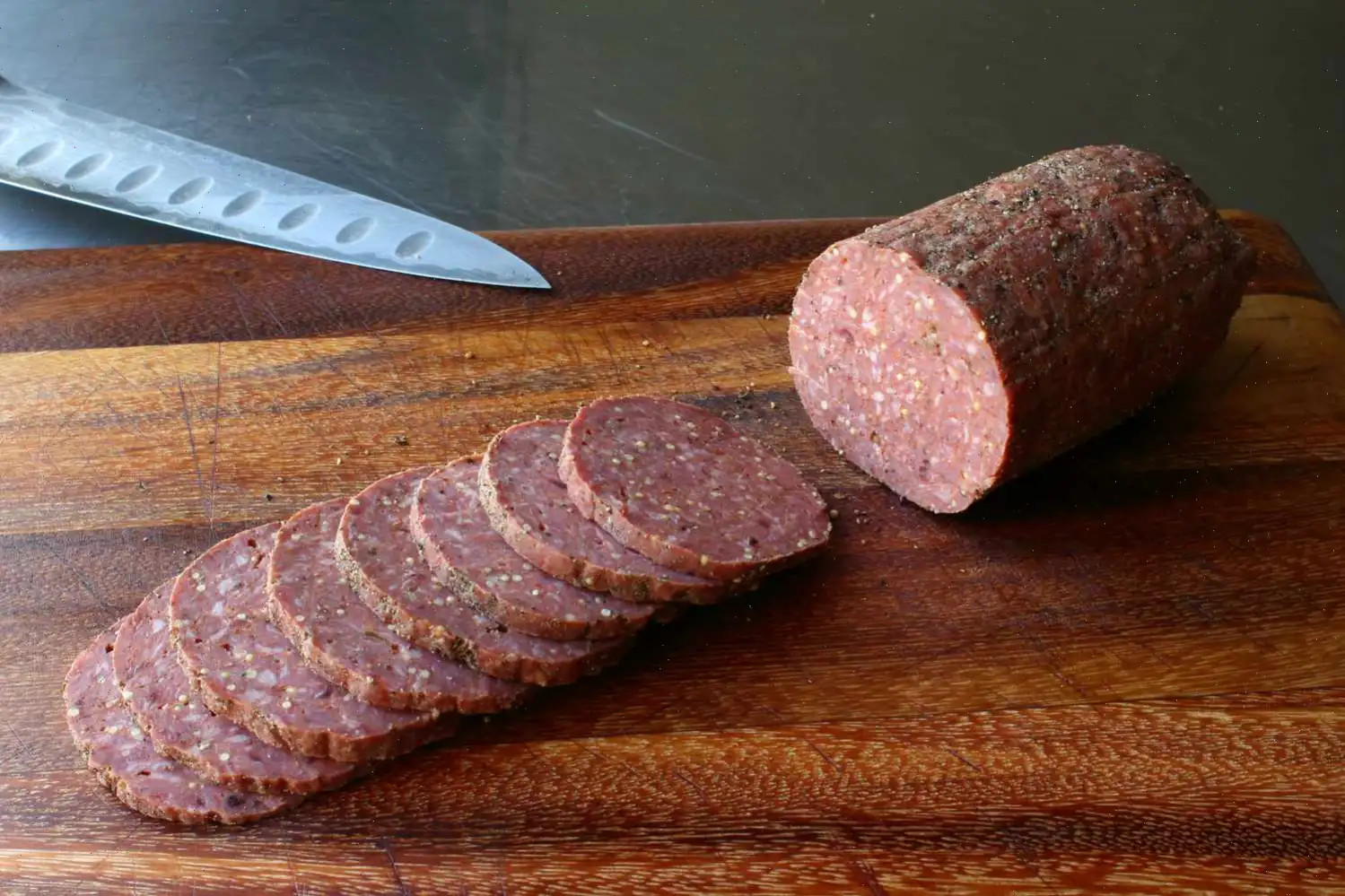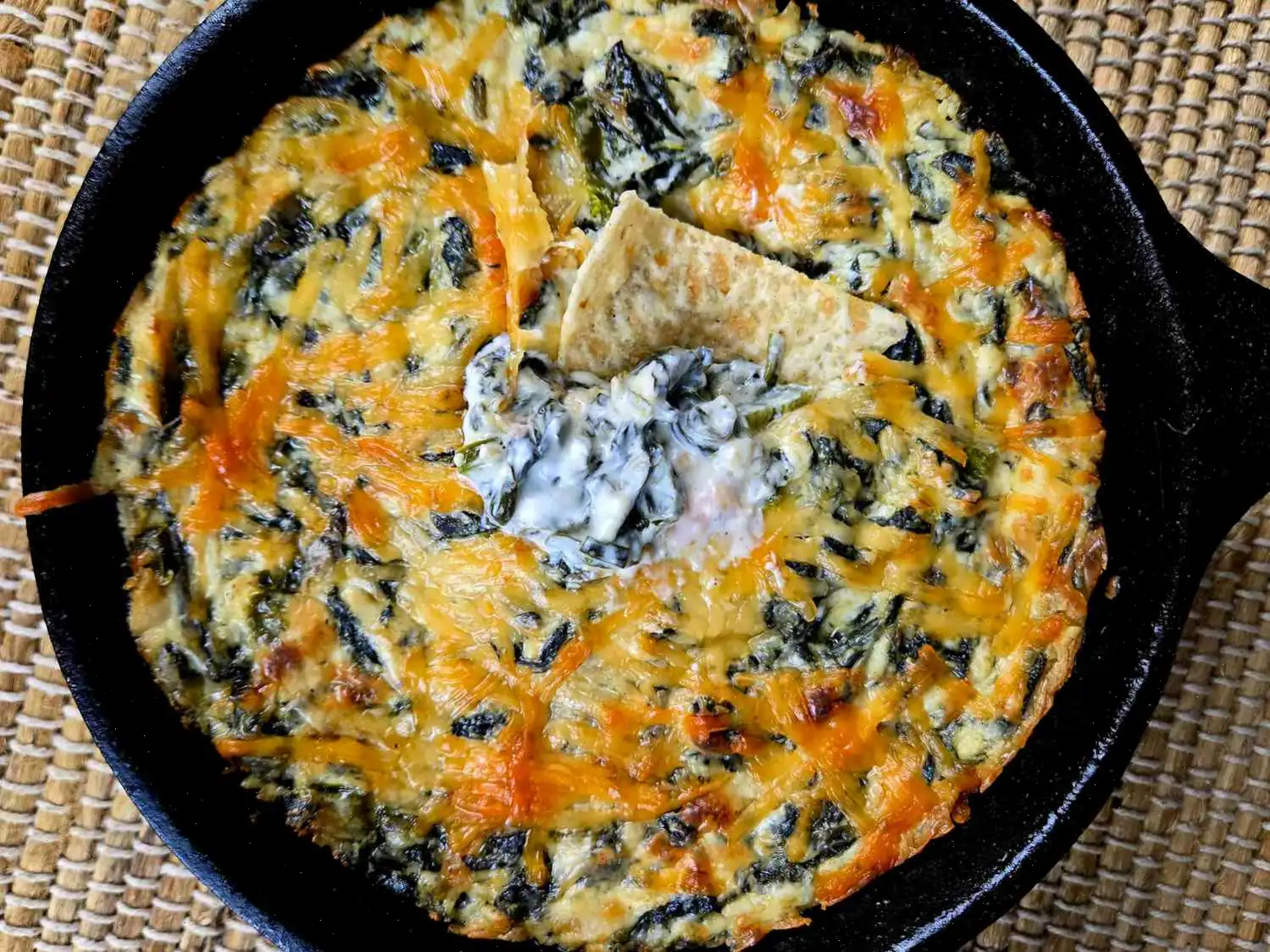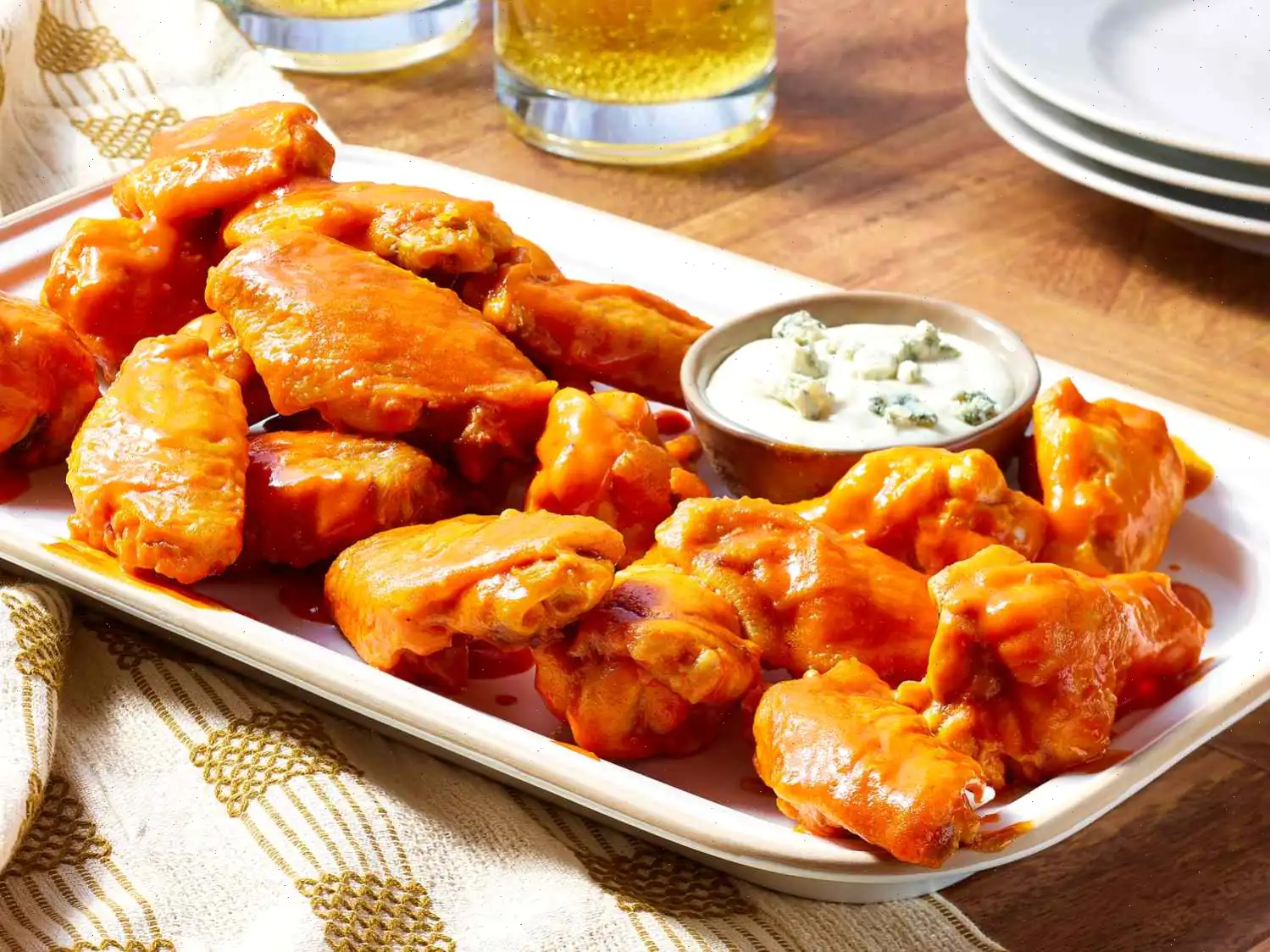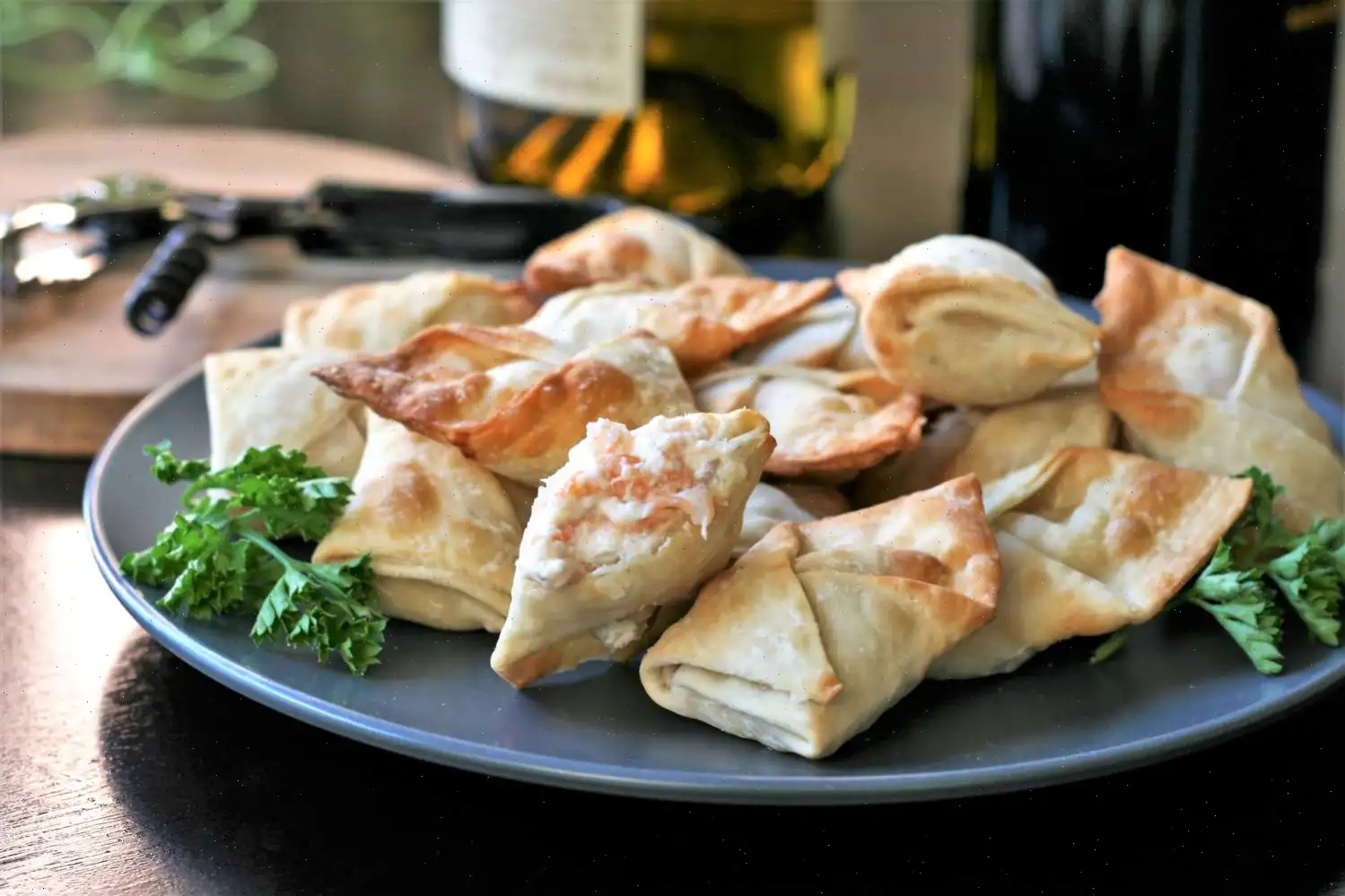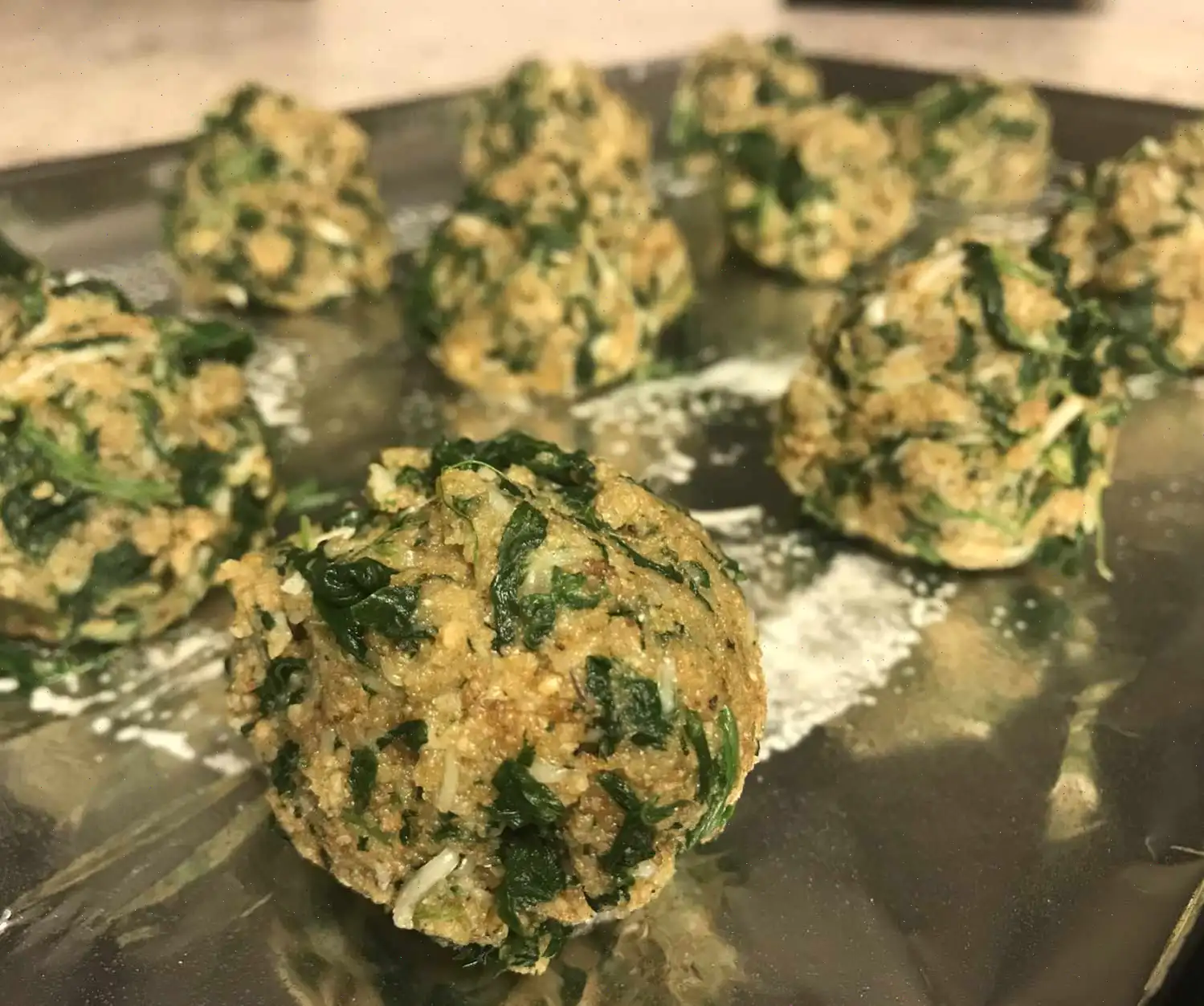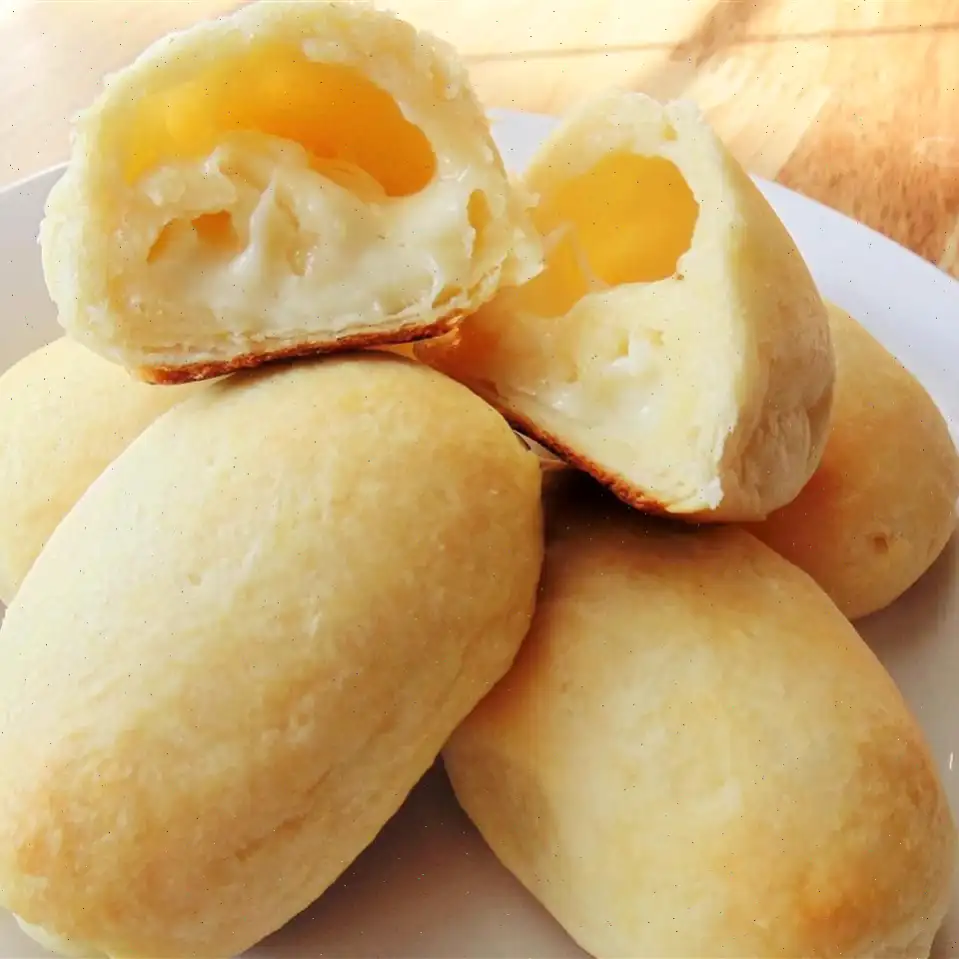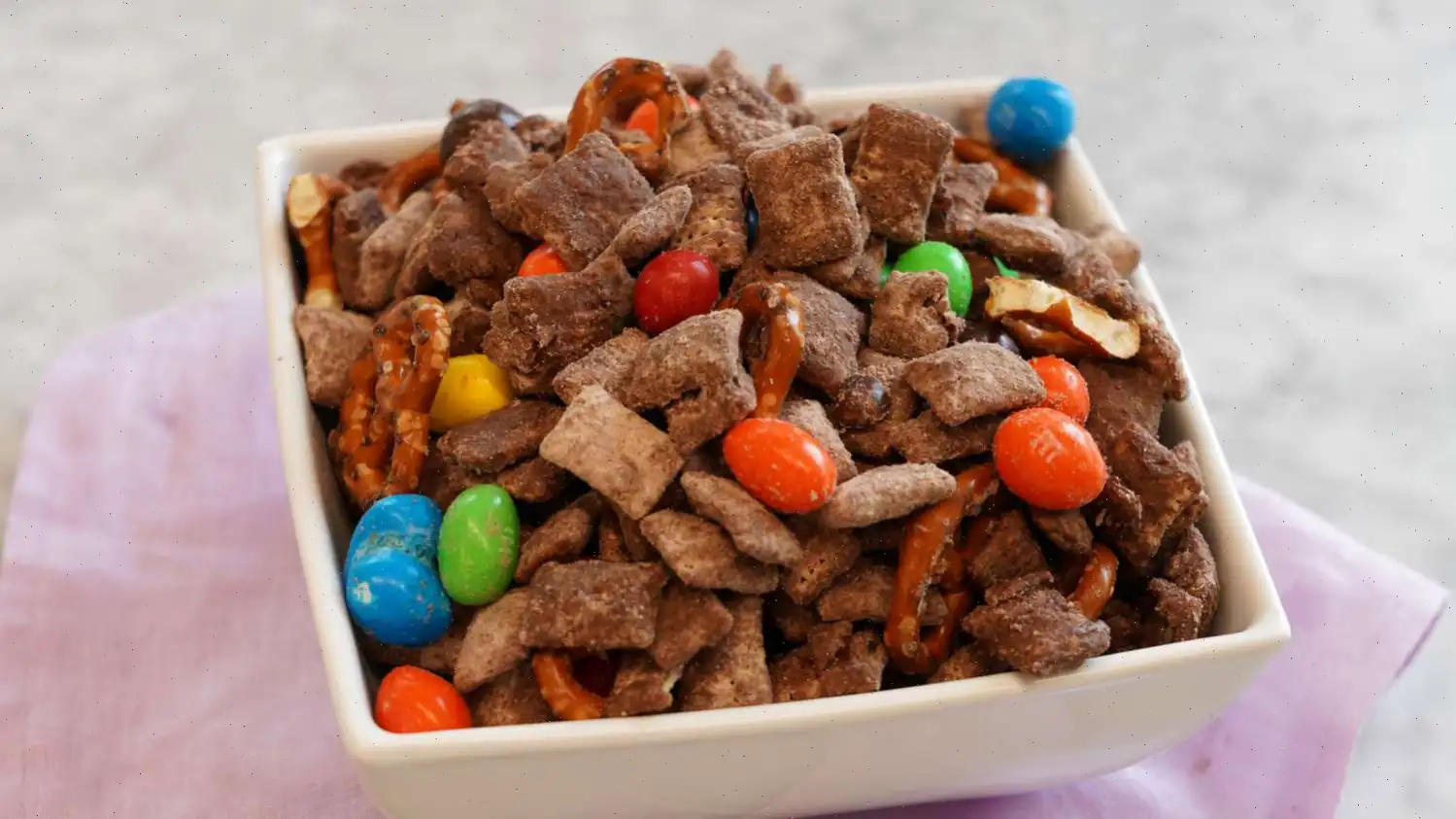
Chef John's Summer Sausage Recipe
Ingredients
This recipe was developed at its original yield. Ingredient amounts are automatically adjusted, but cooking times and steps remain unchanged. Note that not all recipes scale perfectly.
Original recipe (1X) yields 8 servings
- cup diced celery
- 2 pounds freshly ground beef (85% lean)
- 2 tablespoons whole mustard seeds
- 2 tablespoons kosher salt
- 1 tablespoon garlic powder
- 1 tablespoon smoked paprika
- 1 tablespoon white sugar
- 1 teaspoon coarsely ground black pepper
- teaspoon pink curing salt (Optional)
- 3 pinches cayenne pepper
For the 'Smoking' Wash:
- 1 tablespoon liquid smoke flavoring
- 1 tablespoon cold water
- 1 teaspoon freshly ground black pepper
Directions
- Smash celery into juicy bits using a mortar and pestle. Combine with ground beef in a large bowl.
- Add mustard seeds, kosher salt, garlic powder, paprika, sugar, 1 teaspoon black pepper, curing salt, and cayenne pepper. Mix by hand until thoroughly combined.
- Transfer sausage mixture onto a large piece of parchment paper. Use damp hands to shape into a 4-inch-thick log. Roll up in the parchment paper, compressing it as much as possible. Twist ends tightly to seal. Place on a paper towel-lined baking sheet and refrigerate for 24 hours.
- Preheat the oven to 275F (135C).
- Cut ends off the parchment paper and unwrap sausage. Mix liquid smoke with water and generously brush over sausage.
- Roll sausage back up in the paper, then again in aluminum foil, sealing it tightly and twisting the ends in opposite directions.
- Line a baking sheet with a wire rack and place sealed sausage on top. Poke 5 or 6 holes across bottom for excess moisture to drip out.
- Bake in the preheated oven until a probe or instant-read thermometer inserted into the center reads 150F (66C) and no higher, about 1 hours.
- Let sausage cool in the pan until room temperature, at least 30 minutes. Give ends a tighter twist, then refrigerate at least 8 hours, or overnight.
- Unwrap sausage and slice in half. Coat outsides with 1 teaspoon freshly ground black pepper, place on a plate lined with crinkled foil, and let dry in the refrigerator for 24 hours.
Chef's Notes:
- You can get freshly ground beef from your butcher.
- The salt is best measured by weight, if you have a scale. Use 20 grams.
- Use a probe thermometer if possible; it will ring an alarm as soon as the temperature is reached.
- Feel free to spice this any way you want, but it will help if you include a pinch of pink curing salt.
Nutrition Facts (per serving)
- Calories: 267
- Total Fat: 19g (24% Daily Value)
- Saturated Fat: 7g (34% Daily Value)
- Cholesterol: 68mg (23% Daily Value)
- Sodium: 1564mg (68% Daily Value)
- Total Carbohydrate: 4g (2% Daily Value)
- Dietary Fiber: 1g (4% Daily Value)
- Total Sugars: 2g
- Protein: 19g (38% Daily Value)
- Vitamin C: 1mg (1% Daily Value)
- Calcium: 29mg (2% Daily Value)
- Iron: 3mg (14% Daily Value)
- Potassium: 242mg (5% Daily Value)
* Percent Daily Values are based on a 2,000 calorie diet. Your daily values may be higher or lower depending on your calorie needs.
Note: Nutrient information is not available for all ingredients. Amount is based on available nutrient data.
History of Summer Sausage
Summer sausage is a traditional American snack with roots dating back to the European settlers of the 19th century. The sausage was originally a way to preserve meat without refrigeration, often made with pork, beef, and a variety of spices. It was called "summer sausage" because it was traditionally made during the colder months, allowing it to be consumed throughout the summer. While the exact origin of the name is debated, it's thought that it referred to the fact that the sausage could be stored in the cool summer months, especially in the absence of refrigeration.
Regional Characteristics
Summer sausage is popular in many regions of the United States, particularly in the Midwest, where it is a staple of picnic tables and family gatherings. Different regions have their own variations of summer sausage, incorporating unique spices and ingredients. In the Upper Midwest, particularly among German-American communities, the use of mustard seeds, garlic, and smoked paprika, as seen in Chef Johns recipe, is common. This regional flair adds a distinctive flavor to the sausage, making it both a beloved appetizer and a snack enjoyed at outdoor barbecues and picnics.
How It Differs from Similar Dishes
While summer sausage is often compared to other types of sausage, such as salami or pepperoni, there are distinct differences. Unlike salami, which is typically cured and air-dried over a long period, summer sausage is usually cooked and can be consumed relatively quickly. It is less firm than salami but still has a smoky, savory flavor that sets it apart. The use of liquid smoke in Chef John's recipe is an innovative twist, giving it a smoky depth without the need for a smoker, making it accessible to those who may not have the equipment for traditional smoking.
Where It Is Typically Served
Summer sausage is a versatile food that can be enjoyed in a variety of settings. It is often served as an appetizer or snack at picnics, barbecues, and holiday gatherings. In addition to being sliced and eaten on its own, it is frequently paired with cheese, crackers, and pickles to create a delightful charcuterie board. Its long shelf life also makes it a popular addition to camping trips and road trips, where refrigeration may not be readily available. The robust flavors and ease of preparation make it a crowd-pleaser for any occasion.
Interesting Facts
1. Did you know that summer sausage was once considered a "survival food"? Its high fat content and low moisture allowed it to last for extended periods without spoiling, making it an essential food for travelers and settlers on long journeys.
2. The unique use of pink curing salt (also known as sodium nitrite) in Chef John's recipe helps preserve the sausage and gives it its characteristic pink color. While some people opt to skip the curing salt for health reasons, it plays an important role in ensuring the sausage is safe to eat and has that classic flavor.
3. Chef Johns version of summer sausage is different from the traditional method because it is not smoked traditionally. Instead, he uses liquid smoke to impart that smoky flavor, making the recipe more accessible and faster to prepare.
FAQ about Chef John's Summer Sausage Recipe
Comments
Andrew Birden
10/06/2025 01:52:54 PM
So I've tried several different summer sausage recipes. This one, by far, is the best. I made a double batch, following the recipe exactly. It was delicious. The use of the parchment paper and foil works well, but next time, I'll brush the smoke flavoring and water on the mixture, but then I'll be running it through my sausage stuffer (an attachment to my mixer) into a fibrous casing before baking.
atctrucap
11/25/2021 07:39:51 PM
Came out amazing. I did 8 oz size pieces. Vs one big log. I also doubled recipie. I am curious now tho. Is it shelf stable? I added 1/2 curing salt since I doubled everything. Also added onion powder and less cayenne. Do I need to store them in fridge or are they ok out?
cochog
03/13/2023 02:50:47 AM
I followed the directions to a tee, but alas, it was way to salty. I liked the combination of the spices, maybe I will increase the garlic a bit more next time, but the salt, 2 tablespoons is just to much. Will have to go half next time. Maybe Chef John meant 2 teaspoons?
MICHAEL JACKSON
10/03/2023 12:11:47 AM
The recipe card mentions 2T of salt, and Chef John's notes mention weighing it to 20 grams. From my bread baking, I know that those are not equivalent. I use about 8-10 grams of salt in my sourdough bread that I always eyeball, which is roughly a tsp and a half. So, if you are following my math....use just under 3 teaspoons in this recipe. Or, if the math is too wonky, just weigh the 20 grams and call it good. I used 1/2 beef, and 1/2 sausage from the hog we processed.
annie5911
03/16/2020 10:50:23 AM
I followed the recipe and made no changes. The texture and flavor were great, however, it was waaaaay too salty for our taste. Wondering if it should have called for 2 teaspoons rather than 2 tablespoons of kosher salt.
DidIDoThat
09/08/2024 05:15:17 PM
OOhhh la la, turned out wonderful. I did commit a sin and used ground beef before seeing the chef's comment. Hubby liked it, yet did bring up that it needed more fat. But still... was a winner on my wood board of goodies.
Scott Chester
12/12/2023 02:52:15 PM
Loved it! Well worth the effort.
memyselfandeye
04/23/2023 01:54:38 AM
Upon completion: Mine NEVER cools down to room temp. It would take hours. I've ended up running it under cold water to cool it faster. I started doing that after seeing people smoking salamis in smokers and they pull it directly from smoker into a vat of ice water to stop the cooking process. Anyone else's take a long time to cool too?
Ray H McCormick
06/19/2022 03:16:29 PM
I've made this twice now and both times were a huge hit! I followed the recipe pretty closely each time but am excited to mix up the seasonings and really make it my own next time.
Laura White
02/04/2022 02:35:24 PM
It turned out even better than I hoped.
Rodney Keith Bone
05/04/2021 10:03:18 PM
Way way too salty. I swear the recipe used to say teaspoons not tablespoons when I made it before it was great
Laura Brill Kleban
01/30/2021 10:31:42 PM
I was so intrigued by this recipe that I had to try. I've been Paleo for years and really missed Summer Sausages because of all of the chemicals in the store brands. This was not difficult and I had TOTAL success with my first attempt after watching the full video SEVERAL times. I will have this in my house all the time now, great recipe!
Steve Jowett
09/20/2020 07:04:38 PM
This was great. I did not make any changes to the recipe. I found it tasted better and had a nicer texture after a week in the fridge.
Mark Hache
04/20/2020 09:33:42 AM
Absolutely fantastic! Flavour was great and it did not last 2 days thanks to my hunger. Easy to make and yummy to taste. This will be my go-to sausage recipe for years.


